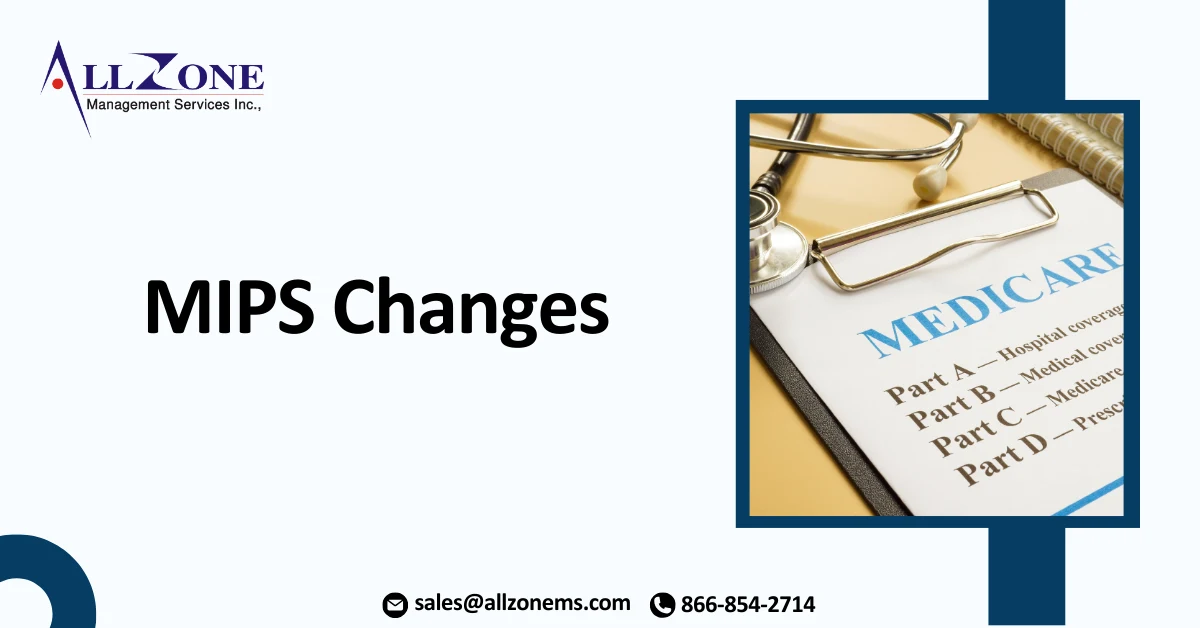In November 2019, CMS published the 2020 Quality Payment Program Final Rule (the “2020 MIPS Final Rule Changes”). Below is a summary of some of the most notable changes to the Merit-Based Incentive Payment Program (MIPS). For a complete list of changes, please review the 2020 MIPS Final Rule or CMS’ Quality Payment Program Resource Library.
MIPS Performance Category Weight
CMS maintained the current weight of the four categories without making changes:
- Quality = 45%
- Cost = 15%
- Improvement Activities = 15%
- Promoting Interoperability = 25%
Performance Threshold
For the 2020 performance period:
- CMS increased the performance threshold to 45 points.
- CMS increased the exceptional performance threshold, which is now set at 85 points.
- Positive payment adjustment could be up to +9% and the maximum negative payment adjustment is up to -9% (adjustment made to 2022 reimbursement).
For the 2021 performance period:
- The performance threshold will be set at 60 points.
- Exceptional performance will remain at 85 points.
The Quality Category Data Completeness Requirement and Flat Percentage Benchmarks
CMS increased the data completeness requirement to 70% in the 2020 MIPS performance year. Measures that don’t meet data completeness will earn 0 points (small practices will continue to earn 3 points).
In addition, CMS established a special benchmarking policy “flat percentage benchmarks” in limited cases where CMS determines that a measure’s otherwise applicable benchmark could potentially incentivize treatment that could be inappropriate for particular patients.
This would apply for the following measures:
- MIPS #1 (NQF 0059): Diabetes: Hemoglobin A1c (HbA1c) Poor Control (>9%).
- MIPS #236 (NQF 0018): Controlling High Blood Pressure
“In flat percentage benchmarks, any performance rate at or above 90% would be in the top decile, any performance rate between 80% and 89.99% would be in the second-highest decile, and so on.” (See 2020 Quality Payment Program Final Rule Overview Fact Sheet, pp. 10-11 “Modified Benchmarks to Avoid Potential Patient Risk”)
New and Removed Quality Benchmarks
CMS added seven new specialty sets for Speech-Language Pathology, Audiology, Clinical Social Work, Chiropractic Medicine, Pulmonology, Nutrition/Dietician and Endocrinology. Note: Clinical Social Workers are not a MIPS eligible clinician type at this time.
It’s important to mention that CMS recognizes the importance of providing clinicians with feedback regarding their MIPS performance. For that reason, CMS requires Qualified Registries to provide performance feedback at least four times a year. Additionally, CMS will require Qualified Data Registries to be able to submit data for all MIPS performance categories that require data submission to reduce the reporting burden.
Improvement Activities (IA) Category
- CMS added 2, modified 7 and removed 15 Improvement Activities.
- CMS will not continue the study on factors associated with quality reporting in the 2020 performance year.
- CMS is changing the group reporting to require at least 50% of the clinicians in the group to attest to performing the same Improvement Activity for any 90 day period within the performance year.
Promoting Interoperability (PI) Category
- Starting with the 2019 performance year and continuing in the 2020 performance period, the optional Query of PDMP measure required a yes/no response instead of a numerator/denominator.
- CMS will redistribute the points for the “Support Electronic Referral Loops by Sending Health Information measure” to “Provide Patients Electronic Access to Their Health Information measure” if an exclusion is claimed.
- Starting in 2020, the optional “Query of PDMP” measure will require a yes/no response instead of a numerator/denominator.
- Additionally, in 2020, groups and virtual groups qualify for automatic reweighting of this category when more than 75% of the clinicians in the group or virtual group are hospital-based.
The Cost Category
- CMS revised the name specifications for the “Medicare Spending Per Beneficiary Measure” to MSPB-C or MSPB Clinician.
- CMS added 10 new episode-based measures.
- Measure attribution will be different for individuals and groups and will be defined in the applicable measure specifications.
- TPCC attribution will require a combination of (i) an E&M service and (ii) general primary care service or a second E&M service, from the same clinician group.
- TPCC attribution will exclude certain clinicians who primarily deliver certain non-primary care services (e.g., general surgery) or are in specialties that are unlikely to be responsible for primary care services (e.g., dermatology).
- MSPB Clinician attribution will have a different methodology for surgical and medical episodes.
Now that we’ve highlighted the main changes to now for MIPS 2020.
For More Information: mips changes

